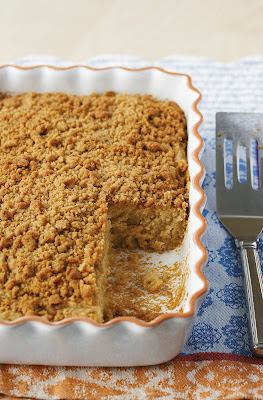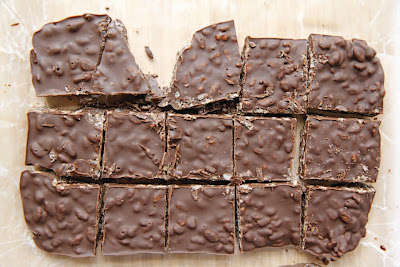Have you decided what to bring for dessert on Thanksgiving yet? This recipe for Strawberry Tartlets from
Learning to Bake Allergen-Free
might just do the trick!
If strawberries aren't your thing, switch it up with different pie fillings. Apple, perhaps?
Strawberry Tartlets
In the Hudson Valley where my family lives, we belong to a Community Supported Agriculture program called the Poughkeepsie Farm Project. Every week from late spring through fall I look forward to fresh vegetables. But my favorite part of the weekly trip to the farm is the pick-your-own berries. There is absolutely nothing that can compare to juicy ripe strawberries fresh from the field. When I first joined the CSA and saw how many strawberries we would be taking home every week, I knew I had to develop a recipe that would leverage the sweetness of those strawberries but not overpower them.
This tartlet recipe simplifies the concept of a pie, while giving it a natural, rugged feel. It works well with all varieties of strawberries, taking you through the summer. It can also be made with any other berry, or a combination of berries. Have fun with it!
{ Makes 4 tartlets }
For the tartlets:
1 cup gluten-free flour blend
¼ teaspoon xanthan gum (leave out if your flour blend contains xanthan gum)
½ teaspoon salt
1 tablespoon granulated sugar
4 tablespoons (½ stick) Earth Balance Natural
Shortening, cold
1 tablespoon apple cider vinegar
1 to 3 tablespoons cold water (as needed)
For the strawberry filling:
1 cup sliced strawberries
1½ teaspoons fresh lime juice
1½ teaspoons tapioca starch
1½ teaspoons granulated sugar
2 tablespoons raw sugar (optional)
Prepare the tartlet crusts:
1. Combine the flour, xanthan gum (if needed), salt, and granulated sugar in a large mixing bowl.
2. Cut the shortening into tablespoon-sized pieces and place them on top of the flour mixture. Use a pastry cutter or pastry fork to cut the shortening into the flour mixture.
3. When the flour and shortening are crumbly, add the apple cider vinegar and 1 tablespoon of cold water. Continue cutting the ingredients together.
4. Add up to 2 tablespoons additional water, ½ tablespoon at a time, as needed. Continue cutting until the dough forms.
5. Separate the dough and use your hands to create four equal-sized balls. Flatten the balls. Cover with plastic wrap, and refrigerate for at least an hour.
6. When you are ready to roll out the dough, preheat the oven to 350°F. Spray a cookie sheet with cooking oil.
Prepare the filling:
7. Coat the strawberries with lime juice.
8. Combine the tapioca starch and the granulated sugar. Mix this together with the strawberries, by hand, and then set it aside.
Roll out the dough and form the tartlets:
9. Place the dough on a smooth prep surface.
10. Using a rolling pin, gently roll each disk into a thin crust, about 6-7 inches round.
11. Use a spatula to gently lift the crusts and place them on the prepared cookie sheet.
12. Scoop the strawberry mixture into the centers of the crusts. Discard any remaining liquid.
13. Form the tartlets with your hands by folding the edges of the crusts over the berry filling, leaving the center open. Repair any broken pieces of crust with your fingers and a dab of water, if needed.
14. If a sugar crust is desired, use your fingers to sprinkle raw sugar over the folded crusts.
15. Bake at 350°F for 20 to 25 minutes, until the crusts are lightly browned and the strawberry filling is bubbling.
Tip:
The dough will work best if it’s refrigerated for at least an hour prior to rolling it out. It can be made ahead and stored in the fridge overnight, or even frozen. If you are using frozen dough, thaw it in the refrigerator before using it.
Credit line: Recipe from L
earning to Bake Allergen-Free: A Crash Course for Busy Parents on Baking without Wheat, Gluten, Dairy, Eggs, Soy or Nuts, copyright © Colette Martin, 2012. Reprinted by permission of the publisher, The Experiment. Available wherever books are sold.








